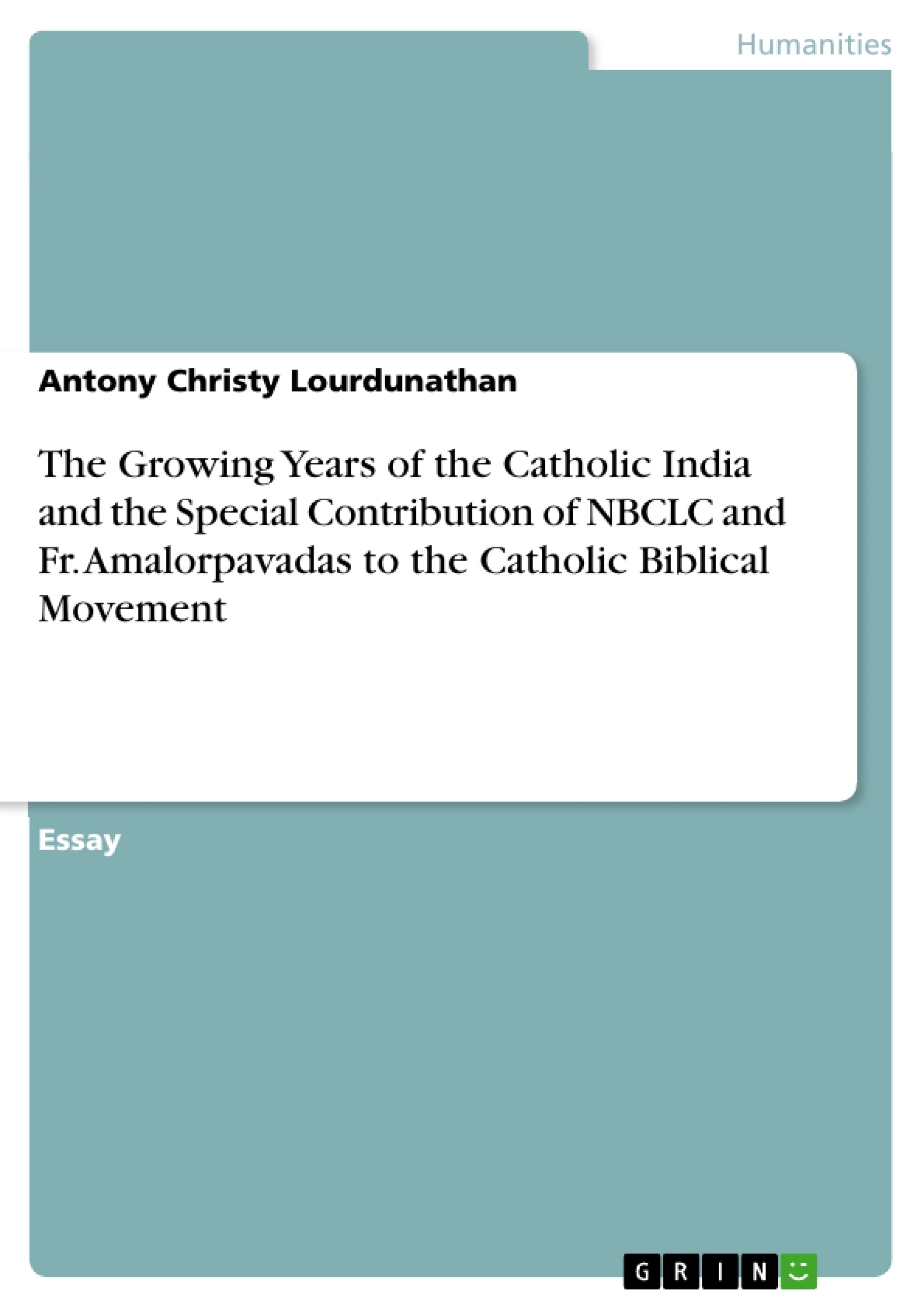Christianity is not merely a set of religious principles; it is a covenant in the same lines of the covenant of the People of Israel for whom the Decalogue, the principles of their life, was a Testament. In a similar fashion, for a Christian, the Holy Bible is the Testament of one’s covenant with Christ and the Abba whom He revealed, in the Holy Spirit. Rightly are its two parts called, the Old and the New ‘Testaments’. Bible is the foundation of the faith experience of an individual who professes to be a Christian and it is in itself the faith expression of generations of people whose faith the individual makes one’s own.
However, the place of this testament today, within the faith expression of an individual or the community has undergone a long process of evolution in history. Within the Christian community of the original times, it was merely used by the elders or the priests during worship. Later it was used by those persons who sought to teach and guide the communities and individuals to instruct them from the examples and the teachings of the people who were originally instruments of the faith experience recorded in the Scriptures.
Further later, it was considered a privilege to hold the Scriptures and read or proclaim from it. There was a moment in history in which the community of faith felt the need to assert that the Scriptures originated from the community (which was trying to record the foundational experiences), for the community (so that the community of faithful could find their ground in those experiences) and that the Scriptures should go back to the hands of the community and not remain merely in the hands of a select few. This feeling and conviction gave rise to a movement in history towards making the Bible the most important factor within the ambit of making sense of one’s faith and its expressions in life and worship.
Inhaltsverzeichnis (Table of Contents)
- INTRODUCTION
- Biblical Movement and the Catholic Biblical Movement
- Catholic Biblical Movement in India
- THE CONTRIBUTIONS OF NBCLC
- From NCLC to NBCLC
- The Contributions of the National Centre through its activities
- Survey of Catholic Translation of the Bible into Indian Regional Languages
- Getting the Bible to the People – Bible Diffusion
- AMALORPAVADASS – THE KEY FIGURE AND HIS CONTRIBUTIONS
- The National Centre and the National Episcopal Commissions
- His Engagements at the International and National level
- THE NBCLC AND FR. AMALORPAVADASS – THE GRAND INTERVENTIONS
- Word and Worship – the Journal since 1967
- The National Seminars – the Animation of the National Church
- National Seminar on Holy Scripture
- First All India Consultation on the Biblical Apostolate
- The All India Catechetical Meetings
- CONCLUSION
Zielsetzung und Themenschwerpunkte (Objectives and Key Themes)
This paper aims to illuminate the significant contributions of the National Biblical Catechetical and Liturgical Centre (NBCLC) and Fr. D. S. Amalorpavadass to the Catholic Biblical Movement in India. The paper focuses on the NBCLC's establishment and its subsequent activities, and highlights the visionary leadership of Fr. Amalorpavadass.
- The evolution and development of the Catholic Biblical Movement in India.
- The role of the National Biblical Catechetical and Liturgical Centre (NBCLC) in promoting the Biblical Movement.
- The contributions and impact of Fr. D. S. Amalorpavadass as a key figure in the renewal of the Catholic Church in India.
- The importance of biblical translation and diffusion in various Indian languages.
- The various initiatives undertaken by NBCLC and Fr. Amalorpavadass, including seminars, publications, and the "Word and Worship" journal.
Zusammenfassung der Kapitel (Chapter Summaries)
The paper begins with an introduction to the significance of the Bible in the Christian faith and traces the development of the Biblical Movement within both the Catholic Church and India specifically. Chapter 2 focuses on the contributions of NBCLC, highlighting its origins, its goals, and its activities such as the survey of Bible translations and the Bible diffusion initiatives. Chapter 3 sheds light on Fr. Amalorpavadass, detailing his life, his work at the regional and national levels, and his significant role in promoting the Catholic Biblical Movement in India. The paper concludes with a discussion of two major interventions: the "Word and Worship" journal and the national seminars organized by Fr. Amalorpavadass and NBCLC.
Schlüsselwörter (Keywords)
This paper centers on key themes including the Catholic Biblical Movement in India, the National Biblical Catechetical and Liturgical Centre (NBCLC), Fr. D. S. Amalorpavadass, Bible translation, Bible diffusion, liturgical and catechetical renewal, and the "Word and Worship" journal. It also delves into the significance of the Holy Scripture in the Christian faith and explores the role of the Church in promoting the Bible within the Indian context.
- Citation du texte
- Antony Christy Lourdunathan (Auteur), 2013, The Growing Years of the Catholic India and the Special Contribution of NBCLC and Fr. Amalorpavadas to the Catholic Biblical Movement, Munich, GRIN Verlag, https://www.grin.com/document/419029



